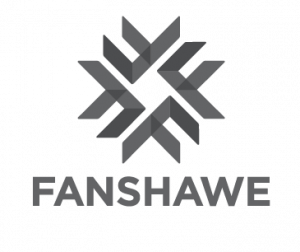11.2: What is Academic Integrity?
Citation is an area where the stakes are high during your college/ university studies. Plagiarism or citation errors can have serious consequences for students who commit academic integrity offences.
Different educational institutions have different definitions. Here is the definition we use at Fanshawe College:
 Academic Integrity is defined as the practice of holding oneself and others accountable for performing all academic work in an honest and ethical manner. Fanshawe College’s mission is to provide pathways to success, an exceptional learning experience and a global outlook to meet student and employer needs. Academic integrity in all academic work is essential for the College to achieve this mission. Academic offences violate academic integrity. (see Policy A136: Academic Integrity for more details).
Academic Integrity is defined as the practice of holding oneself and others accountable for performing all academic work in an honest and ethical manner. Fanshawe College’s mission is to provide pathways to success, an exceptional learning experience and a global outlook to meet student and employer needs. Academic integrity in all academic work is essential for the College to achieve this mission. Academic offences violate academic integrity. (see Policy A136: Academic Integrity for more details).
Faculty Responsibility
Academic integrity is the moral code of academia and is essential to the reputation of Fanshawe College credentials and its graduates. To maintain academic integrity, you must hold yourself and others accountable for consistently performing all academic work in an honest, truthful and ethical manner. Both faculty and students have responsibilities related to academic integrity, and students have the right to appeal any decision related to an academic offense (Teaching and Learning, 2021).
In other words, you must take full responsibility for your work, acknowledge your own efforts, and acknowledge others’ contributions. Working/ writing with integrity requires accurately representing what you contributed, as well as acknowledging how others have influenced your work. When you are a student, an accurate representation of your knowledge is important because it will allow both you and your professors to know the extent to which you have developed as a scholar.
What Is Plagiarism?
Let us examine the definition of plagiarism provided in policy document A136: Academic Integrity in use at Fanshawe College:
Plagiarism “means taking credit for another person’s work.
Examples of plagiarism include, but are not limited to, the following acts:
- The student submits another person’s work as his or her own academic work.
- The student does not credit the original source of ideas, images, information, quotations, or other intellectual property.
- The student submits electronic files or data created by another person without the instructor’s permission.
- The student submits academic work from another course without the instructor’s permission.”
Plagiarism can be intentional (knowingly using someone else’s work and presenting it as your own) or unintentional (inaccurately or inadequately citing ideas and words from a source). It may be impossible for your professor to determine whether plagiarized work was intentional or unintentional. More importantly, under the policy, your professor is not expected to prove that you intended to plagiarize but to ascertain whether or not plagiarism occurred. It is your responsibility to familiarize yourself with the rules and follow them. At work, if you break rules you were supposed to be aware of, you will be sanctioned or fired. Academic integrity rules are no different.
Given the topic of this chapter, we will focus, in the following sections, on item b. from the list above, which concerns information from research sources.
Both in college and at work, you are expected to learn new things from others AND come to new insights on your own. To do this in a way that meets academic integrity standards, you must acknowledge the part of your work that develops from others’ efforts. You do this by citing the work of others. You plagiarize when you fail to acknowledge the work of others and do not follow appropriate citation guidelines.

